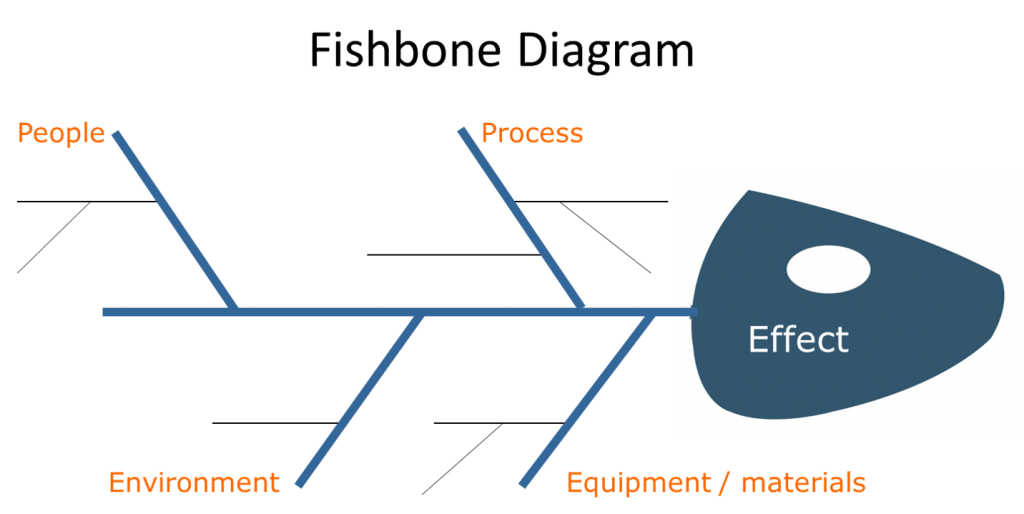Many teams struggle with making process improvements because they implement solutions that do not address root cause problems. We often need to encourage these teams to spend more time defining their problems and then completing simple root cause analysis exercises to dig deeper into the matter. The Five Whys (5 Whys) technique of root cause analysis in Lean is a simple method guaranteed to help a team identify actions that can solve the issue for good.
Benefits of Root Cause Analysis

Lean East has previously written about an example where problem solving to root cause helped a client prevent an issue from reoccurring. We also share an example of weeding a garden by cutting the weeds with scissors or a weed whacker. The garden is going to look great for a few days, maybe even a few weeks. Eventually, the roots of the weeds that remain in the ground are going to allow all of the weeds to grow back in a few weeks.
Your problems are just like these weeds. The only way to prevent them, for good, is to address the root of the problem. If you ever find a problem reoccurs after your team “solved” it this is a sure sign that your solution never addressed the root cause.
Using the 5 Whys for Root Cause Analysis
Tachini Ohno and Sakichi Toyoda are both credited with developing and describing the 5 Whys method as part of problem-solving training in the Toyota Production System. Here is the simple five-part method we recommend for 5 Whys Root Cause Analysis:
- Identify Causes
- Dig Deeper Using the 5 Whys
- Create an Action Plan, Implement Actions, and Check on Your Results
Learn more about each of these steps below.
1. Identify Causes
A fishbone diagram (example shown below) is a great tool for identifying possible causes for an issue. The tool helps a team brainstorm all of the possible causes and even move one level into the origin of the cause.

We recommend teams create a Fishbone Diagram and then circle the 3-5 causes most likely to be the main factors. This can be determined by vote or through discussion; typically, there are a few causes (out of all of the potential causes) that the team believes are more likely to occur.
2. Dig Deeper Using the 5 Whys
Now that you have identified several likely causes, use Five Whys to look for root causes. Here is the simple technique:
- For every cause, dig deeper by asking a “why” based question about the cause
- Ask the full question, including the initial cause
- Repeat five times, or until you get to a “root” cause
Here is a simple example with a problem, initial cause, and questions and answers that might get you to a root cause.

Problem: The application form is incorrect?
Question 1: (or, better, from a Fishbone Diagram exercise): Why was the application form incorrect?
Answer 1: (Initial Cause): Jane made a mistake on the form.
Here is where many leaders stop their analysis! The cause is Jane, so we need to watch her more carefully, write a warning, etc. It is much better to dig deeper using the 5 Whys!
Question 2: Why did Jane make a mistake on the form?
Answer 2: Jane didn’t fill out one of the sections.
Question 3: Why did Jane not fill out the section?
Answer 3: (asked to Jane): Jane didn’t know what to write in that area, or that it was important.
Question 4: Why did Jane not know how to fill out the section?
Answer 4: Jane was trained two years ago when that section didn’t exist. She was not retrained.
Question 5: Why was Jane not retrained on the application form?
Answer 5: The team doesn’t have a retraining process and system to track training.
You could ask more why questions here, but this seems like a fairly good place to apply a corrective action.
3. Create an Action Plan, Implement Actions, and Confirm Results
You should repeat the process of digging deeper by asking 5 why questions for each of your primary initial causes above. You can also consider asking additional why questions if they continue to help you. For example, why doesn’t the team already have a retraining process?
Once you have several corrective actions identified, add these to an action plan. Be sure to define the following in your action plan:

- What the action is
- Who is responsible for implementing the action
- A target date for the implementation
- Your measure of success, or how you will determine that the action is effective
Next, implement the actions in your plan, and confirm the results. You can learn more about the Lean East improvement process here and here.
A 5 Whys Example
We encourage you to apply this simple method of using 5 Whys for root cause analysis to address some of your repeat problems.
If you want our 5 Whys Root Cause Analysis example please click here and we will send it to you via email.
Please ask questions and leave comments below.


Related Posts
The God Complex: Why We’re All Making This One Mistake
How I am Changing the Career Advice I Give My Kids
This is Never Going to Work: Getting Lean Projects Unstuck